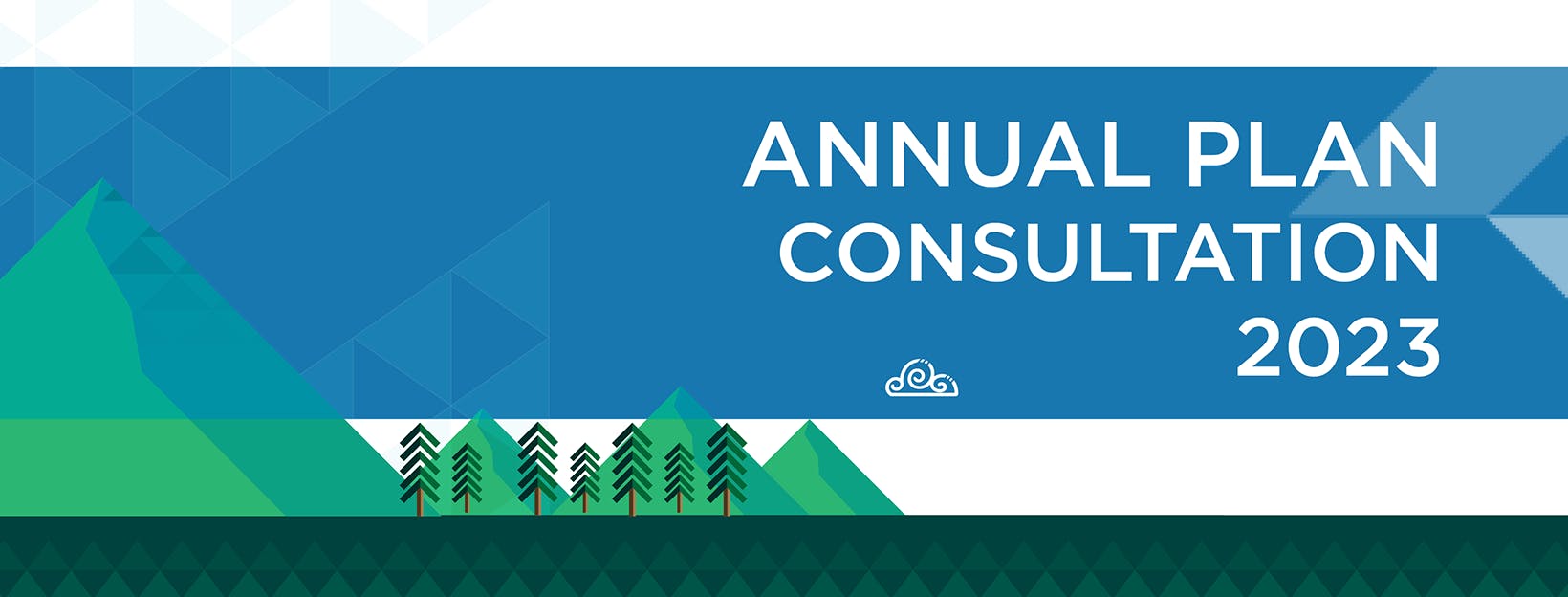Ngā putuputu pātai | FAQs
What is the Annual Plan?
The Annual Plan sets out the services, projects and work programmes to be delivered during the course of a financial year and sets the budget for these.
The 2023/24 Annual Plan is Year 3 of the 2021-31 Long-term Plan (LTP) but proposes a number of changes to what was proposed in the LTP in Year 3.
Council is consulting the public on those proposed changes.
What is a long-term plan?
Every 3 years Council develops a long-term plan (LTP) in consultation with the community. It sets the direction and work plans for a 10-year period.
The current 2021-2031 LTP was finalised in June 2021, following substantial community consultation.
An LTP sets Council’s Financial and Infrastructure Strategies, details performance measures and provides the rationale for delivery of activities, among other things.
The two years following adoption of an LTP, the council develops annual plans and budgets. Essentially this is an update to what was agreed through the LTP and any significant or material changes are consulted on with the community.
What is the Annual Plan discussion/consultation document?
This document outlines information about the work programmes, projects and services Council proposes to deliver in the 2023/24 financial year, which starts 1 July 2023.
It also outlines proposed changes to council services, stopping or pausing spending in some areas and proposals to increase fees and charges to cover rising costs, increase revenue and reduce reliance on rates to pay for these services.
Feedback about what is proposed will be used to help guide elected members in their final decision-making.
What is the proposed general average rates increase for 2023/24?
Council is proposing a 7.2% increase.
Rates for individual properties will vary, depending on the value of your property, the services for which your property is rated, whether the property is used for business, residential or farming purposes and any changes to the amount charged for those.
What is the proposed capital works programme for 2023/24?
Council is proposing a capital works programme totalling $141m.
This will include continuing or starting projects such as: upgrade of the wastewater treatment plant, Tarawera Sewerage Scheme construction, Aquatic Centre upgrades and major stormwater enhancements, along with replacement of infrastructure coming to the end of its useful life.
How is what council does funded?
Most of the funds to help council operate daily come from general and targeted rates which accounts for about 83% of funding.
Other funds come from fees and charges, subsidies and grants and development contributions.
What do my rates pay for?
 Your rates pay for a wide range of services and work programmes including sewerage and sewage, stormwater and land drainage, water supply, waste management, district development, regulatory services, roads and footpaths, community leadership and community wellbeing.
Your rates pay for a wide range of services and work programmes including sewerage and sewage, stormwater and land drainage, water supply, waste management, district development, regulatory services, roads and footpaths, community leadership and community wellbeing.
Why are you proposing a rates increase?
Increases are implemented at a rate that matches the increase to Council’s cost base. Changes to Council’s cost base are mainly driven by the expectations to deliver on solutions to the challenges the district faces, increases in compliance and regulation, inflation and depreciation.
Council acknowledges that household budgets are under pressure. The same applies to Council with many factors influencing and creating pressure on Council services that lead to increased costs.
Council has made a concerted effort to keep the proposed 2023/24 general rates increase as low as possible through proposed measures outlined in the Draft Annual Plan.
What does Council use debt for?
Council uses borrowing to uplift facilities and infrastructure.
It does not borrow to fund for operational purposes, nor to renew existing assets.
Funding capital projects through debt spreads the burden over current and future generations that will benefit from these.
Unlike residential and business borrowing, which is secured against assets, Council’s borrowings are secured against its revenue, in particular its ability to rate.
Council borrows from LGFA (Local Government Funding Agencies) and banks.
What is the current status of Council’s debt?
The proposed level of borrowing for 2023/24, $51m, will ensure Council remains under the legislated debt limit.
Council has a debt ceiling of not more than 2.5 times its annual revenue (250% debt to revenue ratio) and in 2023/24, based on the proposed level of debt, that ratio is forecast to be at approximately 178%.
How /why were these proposals selected?
Council staff looked at the services we provide across our entire organisation to identify areas where savings could be made by pausing some planned projects or changing the level of service we currently provide (e.g closing the library on Sundays or reducing the frequency of mowing of reserves and green spaces).
What happens if the community and councillors decide not to progress some or all of the proposals in the Draft Annual Plan?
The proposals reflect the changes to services needed to keep any rates increase at 7.2%. If some are not progressed after council deliberations then this would mean that the proposed rates would have to increase. This would be up to 11.9% if none of the proposals are progressed.
I want to make a submission on behalf of a group. Will this have more weighting than several individual submissions?
No. The submission form requests the name of an individual so a group submission would only have one name attached to it.
Do I have to make multiple submissions if I want to address more than one proposal?
You can use the online survey form to say Yes or No to any of the proposals and / or the free-text submission form to comment on anything in the FY 24 Draft Annual Plan.
